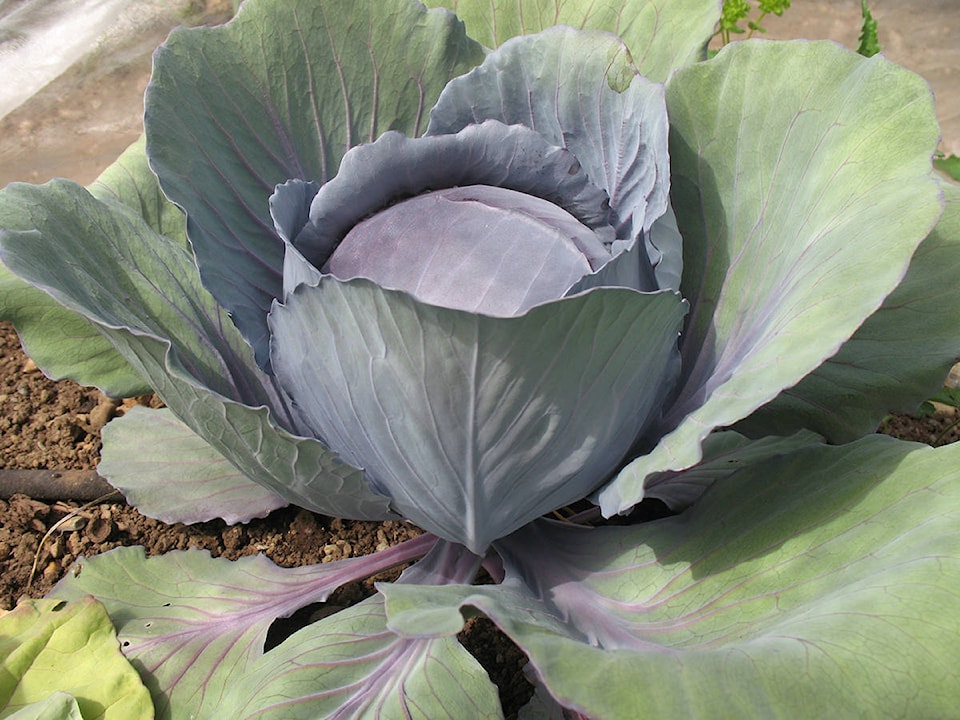By Mary Lowther
Until the early 19th century cabbages were the main bill of fare in most of Europe, and no wonder.
Cabbage is nutritious and can be grown year-round in a wide range of soils and climates. Properly grown cabbages contain many minerals and vitamins. When fermented, as in sauerkraut and kimchi, the vitamin C content of cabbage soars and keeps well for months. Before Clarence Birdseye invented refrigeration this was a big deal.
Even such staples as peas and carrots were introduced to England by Henry VII, who had grown accustomed to them while growing up in the south of France.
The development of world trade has led to an increased variety of edible plants, and palates jaded by millennia of cabbage turn naturally to new and more exciting tastes and textures.
In addition, I suspect cabbages have been unfairly regarded because too often they are allowed to grow overly large and tough, requiring long cooking times to render them palatable. If harvested when they are about three quarters grown, they taste fresh and tender.
Be careful when buying seeds because varieties were developed specifically for one season or another. There are four basic types: spring sown cabbages that we can begin indoors late February, transplant late March and harvest in early June; summer/fall types that can be sown the same time as spring varieties but they take longer to grow to maturity; cabbages sown late June that can be harvested late fall and all winter; and overwintering varieties that are started mid July and survive the winter to sprout up the following spring to produce an early crop. Savoy cabbages, in particular, survive winter frosts well without freezing.
David insists that Savoy cabbages make the best cabbage rolls. He says he learned that from a Ukrainian baba at the Yorkton Fair and has proved it through years of trial and gluttony. Slugs and cabbage moth caterpillars certainly must find cabbage delicious since they can eradicate a whole planting if you turn your back on them.
Slugs can be kept substantially at bay by using soaker hoses instead of overhead sprinklers that water the whole area since slugs don’t like to crawl across dry hot soil. Spun cloth cover like Remay will keep out cabbage moth as long as there are no holes or spaces they can crawl through. I tried covering the crop with five-eighths inch mesh one year and saw those moths squeeze through the holes as if they weren’t there! Fortunately wasps also found their way inside and since they prey on the caterpillars, my crop was unscathed. Wasps eat larvae. Snakes and frogs eat slugs. Isn’t it amazing how gardening can help you discover new friends?
Club root, alas, has me befuddled. This is a nasty fungus that grows on brassica roots like cabbage and looks like white, lumpy tumours. When it infests the soil plants become stunted, and nothing I’ve done so far has stopped it. My spring crops grow well, but by summer club root that has clearly been festering and just waiting for hot weather explodes in the soil and demolishes my cabbages, even though I rotate my beds. When club root gets that bad I take out the whole plant and put it in the GARBAGE! If it went into the compost heap the fungus might survive and then get spread over the garden. This year I’m fertigating the roots with compost tea to see if that helps. “Fertigating” is a term Steve Solomon coined to describe using compost tea on plant roots to give them a nutrition boost and fill the soil with beneficial organisms that grew in the tea.
Here’s a recipe for Kimchi that I like:
1 cabbage
¾ c. kosher salt
1 green onion, chopped
¼ onion, minced
1 clove garlic, mashed
1 T. honey
½ tsp. ginger (powdered or fresh)
2 ½ T. chile powder
½ apple, grated on small holes
½ pear, grated on small holes
Directions: Thinly slice cabbage (I use a mandolin), place in a large bowl, sprinkle with the salt and massage it in. Let it sit for six hours. Rinse off the salt. Mix in all the other ingredients and place in a cool place for four days. Refrigerate up to one month.
David has many recipes for cabbage rolls, but this is MY column. Those interested in his culinary experiments can find him most mornings in the coffee shop at Country Grocer, swilling tea and talking treason with the other regulars.
Please contact mary_lowther@yahoo.ca with questions and suggestions since I need all the help I can get.
